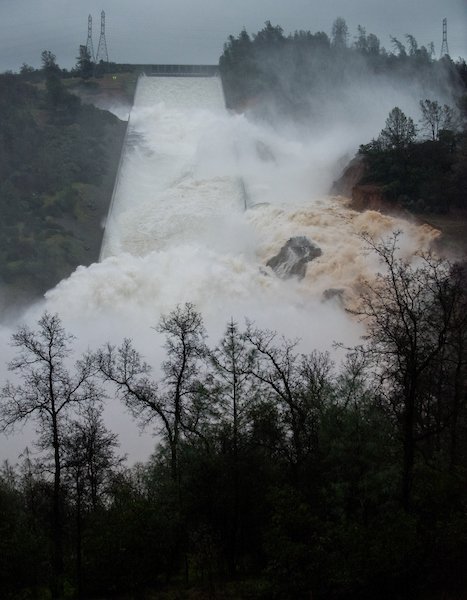
OROVILLE, CA. — The auxiliary spillway at Oroville Dam is “predicted to fail within the next hour,” officials said late Sunday night.
Use of the auxiliary spillway has lead to severe erosion that could lead to a failure of the structure.
Residents have been ordered to evacuate northward.
WATCH LIVE:
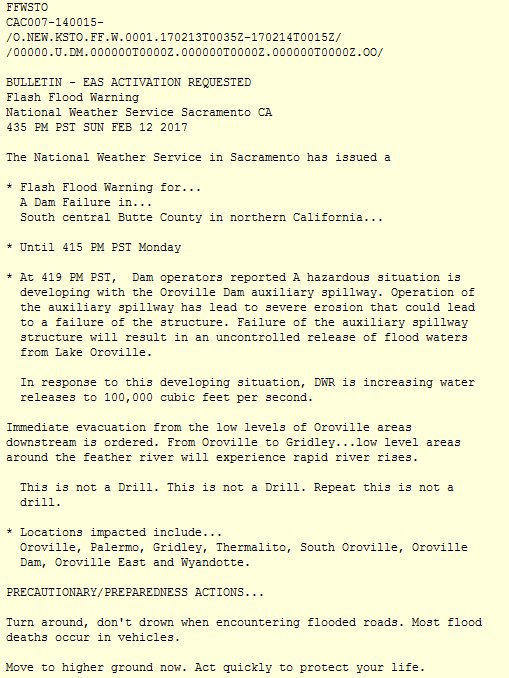
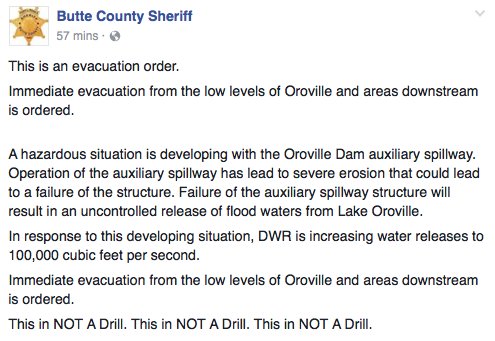
Lake Oroville reached an elevation of 901 feet above sea level this morning at approximately 8:00 a.m., which triggered the natural flow of water over the lip of the lake’s auxiliary spillway. The auxiliary spillway is a wooded hillside that will carry substantial debris into Feather River. In anticipation of these flows, DWR and CAL FIRE crews have been clearing trees and brush from the water’s path for the last several days. The auxiliary spillway has never been used in the lake’s 48-year history. Feather River flows are not expected to exceed flood control capacity.
EMERGENCY EVACUATION: Auxiliary spillway at Oroville Dam predicted to fail within the next hour. Oroville residents evacuate northward.
— CA – DWR (@CA_DWR) February 13, 2017
⚠️ Move to higher ground! Flash Flood Warning including Oroville CA and Thermalito CA until 4:15 PM PST pic.twitter.com/9jj56udkGv
— @NWSFlashFlood (@NWSFlashFlood) February 13, 2017
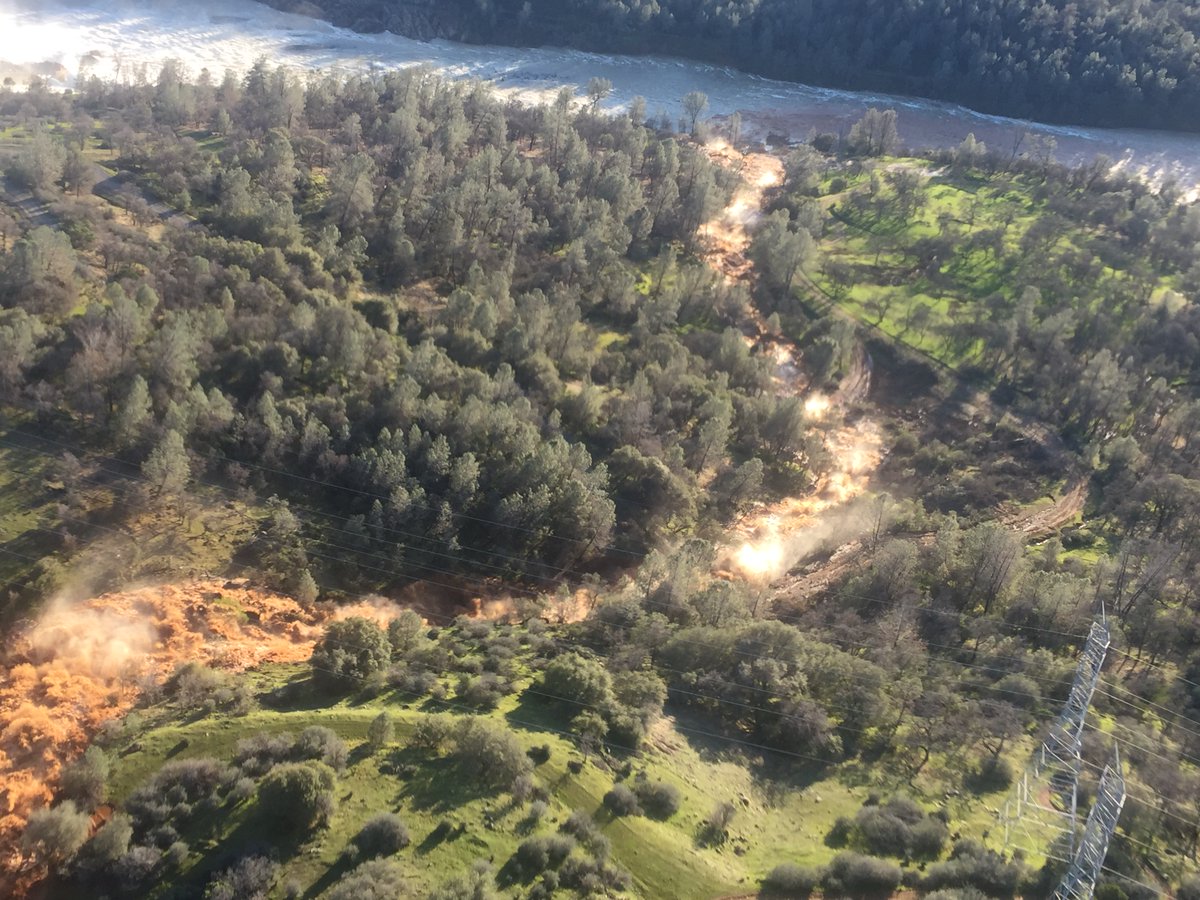
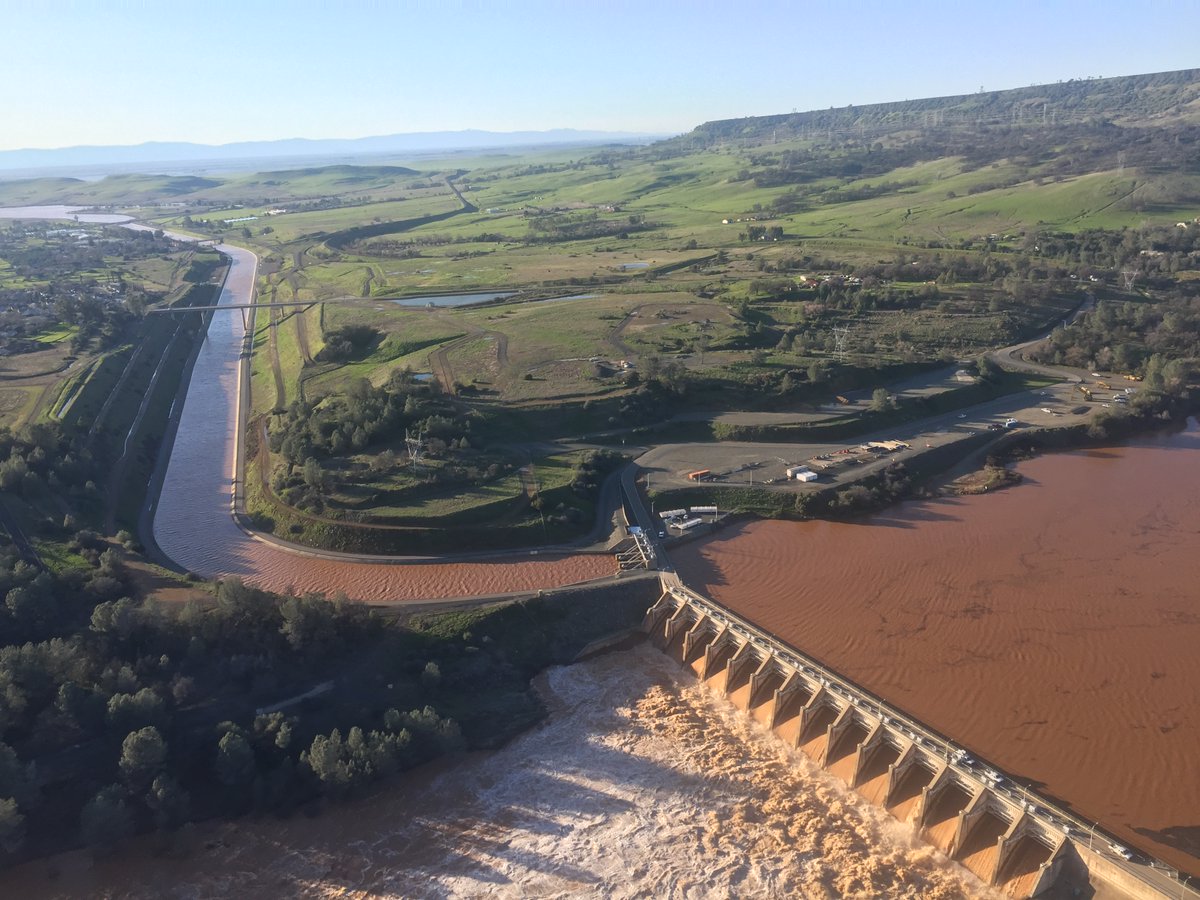

Press Release: Oroville, Calif. – The relatively light flow of water that began washing into Lake Oroville’s auxiliary spillway Saturday morning is expected to continue flowing for the next few days. Total releases from the reservoir do not threaten the dam or downstream communities and fall well within the capacity of the Feather River and other downstream channels. Hampered by serious erosion that opened starting Tuesday on the lower portion of the dam’s main spillway, the California Department of Water Resources (DWR) prepared for Lake Oroville to rise to its highest level ever. The lake exceeded the elevation of 901 feet above sea level shortly after 8 a.m. today, at which point water slowly began to flow over the concrete weir of the auxiliary spillway, down a hillside, and into the Feather River. The auxiliary spillway is operating as intended. “The flows we’re seeing are extremely low compared to the design of the structure,” said DWR Acting Director William Croyle. “Based on our current situation, there is no threat.” Flows of between 6,000 cubic feet per second (cfs) and 12,000 cfs are expected to flow into the auxiliary spillway for 32 to 58 hours, based on the latest modeling of weather, reservoir inflow and other factors. Those flows will stop once discharge from the lake exceeds inflow. Flows into the auxiliary spillway are far less than the volume of water washing into the lake from the Feather River watershed. That’s because the 16,000-acre surface of the lake acts as a buffer, spreading and attenuating inflow. In order to help manage reservoir levels, DWR operators also are discharging 55,000 cfs from the damaged concrete spillway and expect to continue to do so. Upward erosion on this closely monitored, gated spillway has slowed considerably. DWR focused Saturday on ways to get the Hyatt Power Plant at Oroville Dam back in operation, because 14,000 cfs can be discharged from the plant when it is operating, which would help with reservoir management. Power generation was halted when the water levels in the channel that leads from the power plant became high enough to compromise operation. Water levels rose when debris from the eroded concrete spillway piled up in the channel below. The same erosion also threatens the towers that hold the power lines that take electricity from the power plant to the electrical grid; such a connection is needed for the power plant to operate. DWR, Pacific Gas & Electric Company, and other partners are working to safeguard the hydroelectric facility and power lines.

